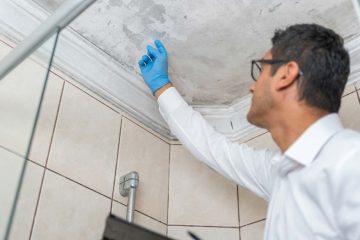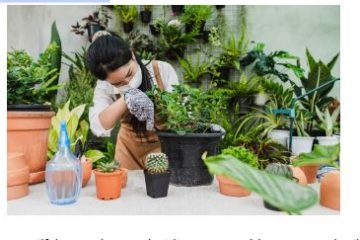In a home bustling with children’s energy, ensuring safety becomes a top priority—not just in how we secure the environment but in how we manage household pests. Traditional pest control methods often involve chemicals that can harm children if not used correctly.
Thus, finding child-safe pest control in Maitland involves finding a professional who uses various strategies to prevent these insects from entering our homes. If you are a concerned parent or guardian focused on finding the best pest-resistant solution, you should not miss this blog. This blog focuses on practical and safe methods to keep pests at bay without compromising the health and safety of your little ones.
Understanding the Risks
Before delving into child-safe pest control methods, it’s essential to understand why traditional pest control can pose risks. Many conventional pesticides contain toxic substances that can affect a child’s health, leading to respiratory issues, skin irritations, or more severe health problems if ingested. Therefore, the focus shifts towards less harmful methods.
Prevention: The First Line of Defense
The cornerstone of child-safe pest control in Maitland is prevention. By making your home less appealing to pests, you can significantly reduce the chance of infestation without resorting to harsh chemicals.
1. Seal Entry Points:
Regularly inspect your home for cracks, holes, and gaps where pests can enter. Seal these areas with caulk, steel wool, or appropriate materials.
2. Maintain Cleanliness:
Pests are attracted to food remnants and clutter. Store food in sealed containers and keep counters and floors clean. Regularly dispose of garbage and declutter spaces to remove potential pest-hiding spots.
3. Manage Moisture:
Many pests are drawn to moisture. Fix leaky faucets and ensure proper drainage around your home to keep it dry and less inviting to pests.
Child-Safe Pest Control Methods
When preventive measures need a boost, you can employ several child-safe strategies before looking for residential pest control services in your region.
1. Natural Repellents:
- Diatomaceous Earth:
This is a powder made from the remains of tiny aquatic organisms known as diatoms. It’s non-toxic to humans but deadly to insects. Sprinkle it around areas where pests are a problem.
- Essential Oils:
Certain oils, such as peppermint, lavender, and eucalyptus, are natural pest repellents. Dilute a few drops in water and spray around entry points and problem areas.
2. Physical Traps:
- Sticky Traps:
It is ideal for catching insects like flies, spiders, and even mice without using chemicals. Place it in corners and under furniture, out of the reach of children.
- Humane Traps:
For larger pests like rodents, consider using humane traps that capture the animals without harming them, allowing them to be released far from your home.
3. Biological Controls:
Introducing natural predators into your garden can help control outdoor pests. Ladybugs eat aphids, and birds can help reduce insect populations. Just ensure these measures don’t inadvertently introduce new problems.
Safe Use of Pesticides: A Detailed Guide
When it comes to keeping our homes pest-free, safety is paramount—especially in households with children. While prevention is critical, sometimes the use of pesticides becomes necessary. In such cases, selecting residential pest control services that use pesticides safely can mitigate risks to our little ones. Here’s how to approach pesticide use with child safety in mind.
- Choose Non-Toxic Products
- Research:
Before purchasing any pesticide, conduct thorough research. Look for products specifically designed to be non-toxic to humans and pets. These products are usually made from natural ingredients and are less likely to cause harm if accidentally ingested or touched.
- Certifications:
Seek out products with certifications from reputable health and environmental organisations. Certifications can indicate that the product has undergone strict testing to ensure its safety for home use.
- Ingredients:
Familiarise yourself with the active ingredients in pesticides. Some ingredients are known for their low toxicity and environmental impact, such as pyrethrin (derived from chrysanthemum flowers), which is effective against a broad range of insects yet is considered one of the safer options for use around children.
- Read and Follow the Instructions
- Comprehension:
Before using any pesticide, ensure you fully understand the instructions. This includes the recommended dosage, application methods, and specific precautions to protect your family and pets. If you are still unsure about the usage, then calling residential pest control professionals is better.
- Protective Gear:
Some products may advise the use of gloves or masks during application. Even if the product is labelled as non-toxic, using protective gear can prevent any potential skin irritation or allergic reactions.
- Storage:
Proper storage is crucial. Pesticides should be kept in their original containers with intact labels and stored in locked cabinets or shelves well out of the reach of children and pets. This reduces the risk of accidental ingestion or contact.
- Ventilate
- Application:
When applying pesticides indoors, open windows and doors to allow fresh air to circulate. Use fans to help disperse any airborne particles and to speed up the drying process for treated surfaces. Avoid using pesticides in confined spaces where ventilation is poor.
- Timing:
Consider the timing of your application. Applying pesticides when children and pets are less likely to be in the area, such as during school hours or before a family outing, can minimise exposure.
- Post-Application:
After applying pesticides, keep the area well-ventilated for as long as the product instructions recommend. This might mean keeping children and pets away from the treated area for a specified period, even after the product has dried, to ensure that residual fumes have dissipated.
Additional Considerations
- Spot Treatments:
Instead of widespread application, consider spot treatments to target specific areas where pests have been observed. This localised approach minimises the amount of pesticide used and reduces exposure.
- Alternative Methods:
Always consider if non-chemical methods could be effective for your pest problem. Physical traps, barriers, and natural predators can often control pests without the need for chemicals.
- Professional Services:
Hiring professional pest control services for severe infestations that offer child-safe treatment options can be a safer and more effective alternative to DIY methods. Professionals are trained to handle pesticides safely and can tailor treatments to minimise risks to your family.
- Educating Children About Safety
An often-overlooked aspect of child-safe pest control is educating your children about the importance of safety. Teach them not to touch traps or baits and explain why these measures are in place. Encouraging curiosity with supervision can be an excellent way to instil a sense of responsibility and awareness.
Final Words
Balancing the need for pest control in Maitland with child safety requires a thoughtful approach that prioritises prevention and uses chemical interventions as a last resort. You can maintain a pest-free home without compromising your children’s health and well-being by employing physical barriers and natural repellents and educating the entire family about safety.
Remember, the goal is not just to eliminate pests but to create a safe and healthy environment where your children can thrive. Choose OzPest Solutions for quick action today.




